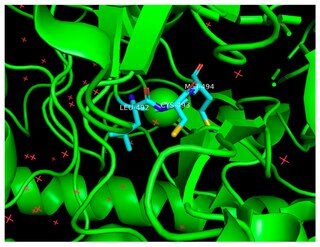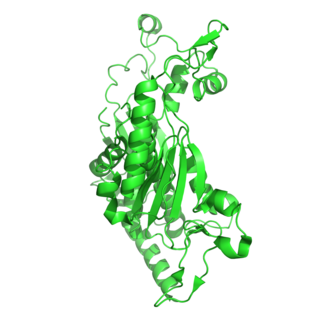 | |
| Names | |
|---|---|
| Other names benzoyl-S-CoA S-Benzoate coenzyme A | |
| Identifiers | |
3D model (JSmol) | |
| ChEBI | |
| ChemSpider | |
PubChem CID | |
| UNII | |
CompTox Dashboard (EPA) | |
| |
| |
| Properties | |
| C28H36N7O17P3S−4 | |
| Molar mass | 867.60 g/mol |
Except where otherwise noted, data are given for materials in their standard state (at 25 °C [77 °F], 100 kPa). | |
Benzoyl-CoA is the thioester derived from benzoic acid and coenzyme A. The term benzoyl-CoA also include diverse conjugates of coenzyme A and aromatic carboxylic acids. Benzoate, vanillin, anthranilic acid, 4-ethylphenol, p-cresol, phenol, aniline, terephthalic acid, [3-hydroxybenzoic acid, and phenylalanine are all metabolized to benzoyl-CoA. Additionally, cinnamic acid, p-coumaric acid, ferulic acid, toluene, caffeic acid, benzyl alcohol, and mandelic acid are suspected to be processed similarly. [1]













